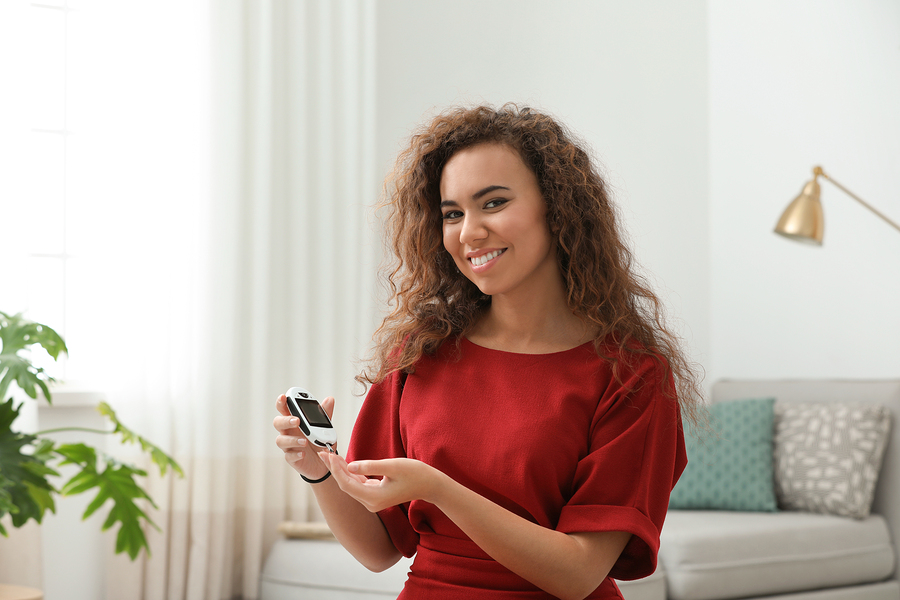Last year saw some significant steps forward in diabetes technology, with a number of new monitoring technologies and insulin delivery devices gaining US Food and Drug Administration (FDA) approval over the course of 2018. Among the new products available to American diabetes patients last year were the Freestyle Libre Flash 14 Day Glucose Monitoring System from Abbott, which utilizes an external continuous glucose sensor measure blood glucose levels and allows users to get glucose insights through their iPhone or glucose reader device, and the Dexcom G6 Continuous Glucose Monitoring (CGM) System, which was launched in March last year. The latter was the first FDA-approved CGM device able to communicate with insulin pumps designed to adjust dosages based on the readings of CGM devices, such as Tandem’s new T:slim X2 insulin pump, which can suspend insulin delivery when it predicts insulin levels are likely to drop in the next 30 minutes.
Innovation in the field of diabetes technology continues at a rapid pace and there are several other exciting devices and products likely to gain approval or become available in the US in 2019. If you are one of more than 100 million Americans living with either diabetes or prediabetes, advances in diabetes technologies, devices and products may make your diabetes management simpler and more effective. More advanced glucose monitoring systems can provide greater insights into your blood glucose patterns; new insulin delivery systems make administering medication easier, and new insulins are in development that could increase the time your blood glucose levels remain in range.
We have selected some of the most exciting new technology and products expected to gain FDA approval or become available to US patients in 2019…
Closing the loop?
WaveForm CGM System
The WaveForm CGM System from Waveform Technologies is still some way from being available in the US, but WaveForm Technologies claims its new device could cost less than competitors and offer a longer potential sensor life. The sensor and transmitter are about the size of a nickel and are worn on the body. The device transmits glucose data wirelessly to a smartphone app, enabling users to get up to date feedback on their blood glucose levels.
Unlike the Dexcom G6 CGM, the WaveForm CGM System will be inserted using a reusable needle-free applicator. WaveForm claims using the applicator is “easy and painless” and that the device only needs an average of one calibration per day. With its promise of a longer potential wear life and relatively low manufacturing costs, WaveForm hopes the device could “offer CGM to patients at a very attractive per day cost”.
Furthermore, the company has also unveiled plans to develop a “closed loop” system using the WaveForm CGM. Closed loop systems are at the cutting edge of current diabetes technology, effectively creating an “artificial pancreas” via a system that both monitors blood glucose levels and makes insulin adjustments in response to the CGM data. To date, the only closed loop system available in the US is the Medtronic MiniMed 670G/Guardian Sensor 3 hybrid closed loop, which is indicated for the treatment of diabetes type 1 in patients aged 14 years and older.
Hybrid closed loop systems…
Diabeloop DBLG1 System
Diabeloop’s hybrid closed loop system for treatment of type 1 diabetes, the DBLG1, is set to launch in Europe early this year. The company’s co-CEO and CFO Marc Julien recently told InsulinNation that a second round of financing to support FDA submission and preliminary market introduction in the US is already underway.
The DBLG1 System has three connected components: a CGM, a patch insulin pump system, and a handset. Glucose measurements are transmitted from the CGM to the handset via Bluetooth every five minutes. The system analyses the data in real time, taking into account the medical history and physiology of the patient, as well as any meal or exercise data the user has inputted, then calculates and administers the required amount of insulin.
Skin-patch CGMs…
SugarBEAT CGM System
If you hate needles but need a CGM system to monitor your blood glucose levels, then the SugarBEAT CGM System may be one to watch. The SugarBEAT is a non-invasive CGM that uses easy-to-apply skin-patch technology. In December 2018, Nemaura Medical Inc published promising data from its latest clinical trial, the results of which compared “favorably” with competitor products. The company also claims its CGM will offer diabetes patients a cheaper blood glucose monitoring system more comparable in price to glucose meters and strips. Diabetics who require insulin injections can use the SugarBEAT as an adjunct device after calibrating with a fingerstick reading.
The SugarBEAT CGM can be worn for 24 hours and is attached to the body with an adhesive rather than a needle. A mobile app, tablet, and watch app, (or a dedicated reader device) can display glucose readings at five-minute intervals, enabling users to analyze their CGM data for patterns and more easily understand the factors that affect their blood glucose levels. The SugarBEAT is designed to help pre-diabetics and people with type 1 or type 2 diabetes to better understand how their lifestyle affects their daily blood sugar trends. This information can be used to make lasting lifestyle and behavioral adjustments that could delay or even prevent long-term health issues associated with diabetes. The SugarBEAT may not be available in the US this year, but it is due to launch in the UK in 2019 and roll out to other countries in Europe shortly after.
More connectivity added to existing systems…
Omnipod Dash Insulin Pump
The Omnipod Dash Insulin Pump from Insulet already had a limited market release in the United States with the full market release expected “early 2019” so keep an eye out for this one! The Omnipod Dash is a tubeless, wearable pump that can hold up to 200 units of insulin. It consists of the “Pod”, a waterproof insulin pump worn the body that lasts for three days, and a touchscreen handheld device called the Personal Diabetes Manager (PDM), which controls the Pod wirelessly. Using Bluetooth, users of the Omnipod Dash system can also access their PDM data on their smartphones and connect to the Contour Next One Blood Glucose Meter.
The new system provides an update to Insulet’s existing PDM and it will be a locked Android smartphone rather than a device made by Insulet. To date, there are no CGMs integrated with the Omnipod Dash System, but the Omnipod Display iOS app enables users to view an integrated view of their PDM and insulin data alongside their Dexcom CGM data. Healthcare providers and patients can also view their insulin and CGM data using Insulet Provided Glooko and the addition of Bluetooth technology to the existing Omnipod opens up a number of exciting possibilities for the future, such as cloud storage and greater connectivity between the pod and other devices.
Connected insulin pens...
Novo Nordisk’s NovoPen 6 and NovoPen Echo Plus
This year, Novo Nordisk is rolling out two connected insulin pens, the NovoPen 6 and the NovoPen Echo Plus, which are eventually expected to replace the current NovoPen 5 and NovoPen Echo. The new reusable “smart” insulin pens automatically record how much insulin is injected, boast an 800-insulin injection memory, and have a five-year battery life with no recharging necessary. The pens will be compatible with long-acting basal insulins such as Tresiba or Levemir, as well as short-acting insulins, such as NovoLog.
The NovoPen Echo Plus will be suitable for kids, allowing half-unit dosing and a maximum dose of 30 units, half that of the NovoPen 6. Novo Nordisk has also announced non-exclusive technology partnerships with Dexcom, Glooko, and Roche, which will allow patients to use connected pens alongside apps developed by these firms.
Furthermore, Novo Nordisk also aims to add connectivity to its disposable pre-filled pens via an attachment, which will connect to Bluetooth-enabled smart-devices and transmit the insulin dose, the time it is administered and the type of insulin used.
Looking forward to 2020…
Dexcom G7 CGM System
The Dexcom G6 was released last year, boasting a new sensor lasting up to 10 days and without the need for regular fingerpick calibration. The device features an auto-applicator for easy insertion of the sensor, acetaminophen blocking, and data-sharing capability. However, the company has already unveiled some of the details of its next-generation G7 system…
The Dexcom G7, developed by Dexcom and Verily, is expected to launch in the US in late 2020, so we are still a little way off seeing this system rolled out. However, Dexcom suggests it will be significantly cheaper than earlier systems, which is sure to make it more attractive to a wider demographic of people with type 2 diabetes. The sensor will be fully disposable (like the FreeStyle Libre), will not require fingerstick calibration, will last for 14-15 days, and data from the device will be sent directly to smartphones via Bluetooth. Images of the device released by Dexcom show it will also be markedly smaller than the G6 and suggest it will be one of the most discreet sensors available.








